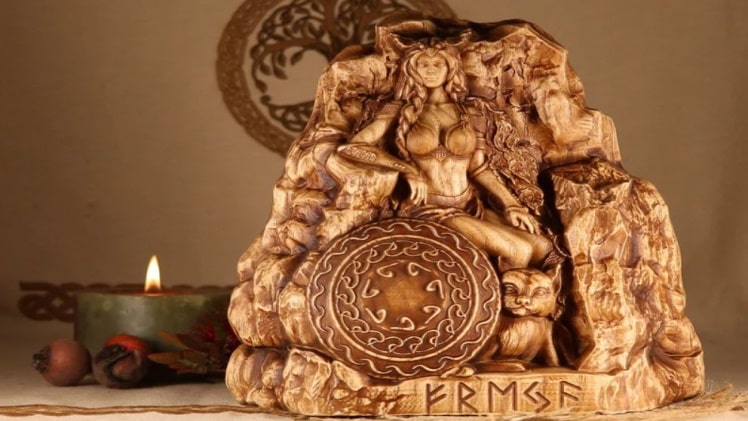Norse mythology, also known as Germanic mythology, is the body of myths of the North Germanic people stemming from Norse paganism and continuing after the Christianization of Scandinavia. The northernmost extension of Germanic mythology, Norse mythology consists of tales of various deities, beings, and heroes derived from numerous sources from both before and after the pagan period, including medieval manuscripts, archaeological representations, and folk tradition.
The pantheon of Norse gods is led by the All-Father, Odin, who is associated with wisdom, war, and death. He is often depicted as a one-eyed old man with a long grey beard and is accompanied by two ravens and two wolves. Odin is also known as the god of poetry and magic and is the ruler of Asgard, the home of the gods.
Another important god in Norse mythology is Thor, the god of thunder and strength. He is often depicted as a muscular man with a red beard, holding a hammer called Mjolnir, which is said to be able to level mountains. Thor is also known for his fierce temper and his protection of Asgard from the giants.
Freyja is the goddess of love, fertility, war, and death. She is often depicted as a beautiful woman with long blonde hair and is associated with the Vanir, a group of gods associated with fertility and prosperity. Freyja is also known for her ability to shape-shift into a falcon and is associated with the afterlife and the power of seers.
Another important goddess in Norse mythology is Frigg, the goddess of marriage, motherhood, and fate. She is the wife of Odin and is often depicted as a beautiful woman with a golden crown and a long gown. Frigg is also known for her ability to see the future, although she is unable to change it.
The god of light and beauty is Baldur, He is the son of Odin and Frigg, and is often depicted as a handsome man with a shining countenance. Baldur is also known for his purity and his invulnerability to all weapons, except for the mistletoe.
Heimdall is the god of light and the guardian of the rainbow bridge, Bifrost, which connects Asgard to the mortal world. He is often depicted as a strong man with a golden helmet and a horn that he can blow to alert the gods of any danger.
Loki is the god of mischief and trickery. He is often depicted as a cunning and mischievous man with the ability to shape-shift into various forms. Despite his negative reputation, Loki is also known for his intelligence and his ability to help the gods in times of need.
Nidhogg is a dragon who gnaws on the roots of the world tree, Yggdrasil. He represents the destructive forces of nature and is often associated with the underworld.
Ragnarok, also known as the “Doom of the Gods”, is the Norse version of the apocalypse. It is said that the gods will face their final battle against the giants and monsters, and that many of them will be killed. The world will then be destroyed by fire and flood, but will be reborn in a new and better form.
Norse mythology also includes a variety of other beings, such as giants, dwarves, elves, and monsters. These beings are often associated with specific characteristics and abilities, and play important roles in the myths and legends of the Norse people.
Norse mythology has had a lasting impact on the world, influencing everything from literature and art to language and place names. The stories and characters of Norse mythology are still popular today, as evidenced by the recent resurgence of interest in Viking culture.
At Art Carving Store we sell dozens of wood statues of Norse gods. Our designs are very intricate and reflect not only each god’s character but also sometimes a particular scene from his life. That is why we have thousands of fans around the world, and happy sales record. Get one of our unique statuettes such as Odin or Freyja wooden statue for your home or for your altar.

